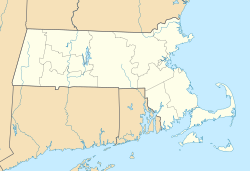History
Its predecessor, the St. Benedict Center began in 1941 as a student center in an old furniture store in Harvard Square on the corner of Bow and Arrow Streets, just a half-block from the Harvard Yard in Cambridge. It was directly across the street from the Romanesque front porch of St. Paul's, Cambridge's renowned "university church".
The three original founders were Catherine Goddard Clarke, Avery Dulles (then a Harvard Law student), and Christopher Huntington, a Harvard dean. Catherine Clarke went on to help found the Slaves of the Immaculate Heart of Mary, Avery Dulles entered the Jesuits and later became a cardinal, and Christopher Huntington became a priest in Long Island, New York.
Fr Leonard Feeney later became the head of the St. Benedict Center. The center was engaged in controversy with the Church over his interpretation of extra ecclesiam nulla salus ("outside the Church there is no salvation"), which led to a lack of clarity regarding the center's status in the Catholic Church. Under the direction of Feeney, Clarke and others organized into a religious community called the Slaves of the Immaculate Heart of Mary. In January 1958, the group moved from Cambridge to the town of Harvard. Differences in governance ultimately led to most of the brother monks becoming Benedictines and most of the sisters reorganizing as the Sisters of Saint Benedict Center, Slaves of the Immaculate Heart of Mary. [3]
This page is based on this
Wikipedia article Text is available under the
CC BY-SA 4.0 license; additional terms may apply.
Images, videos and audio are available under their respective licenses.

